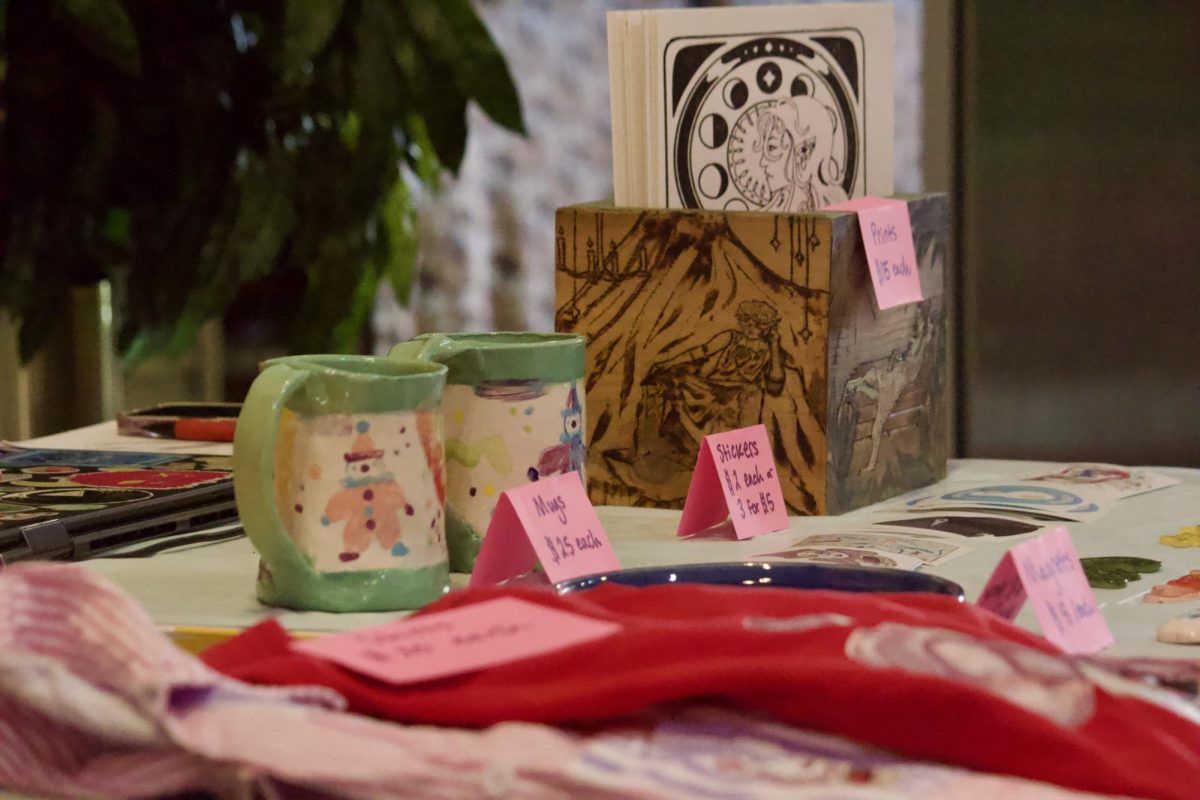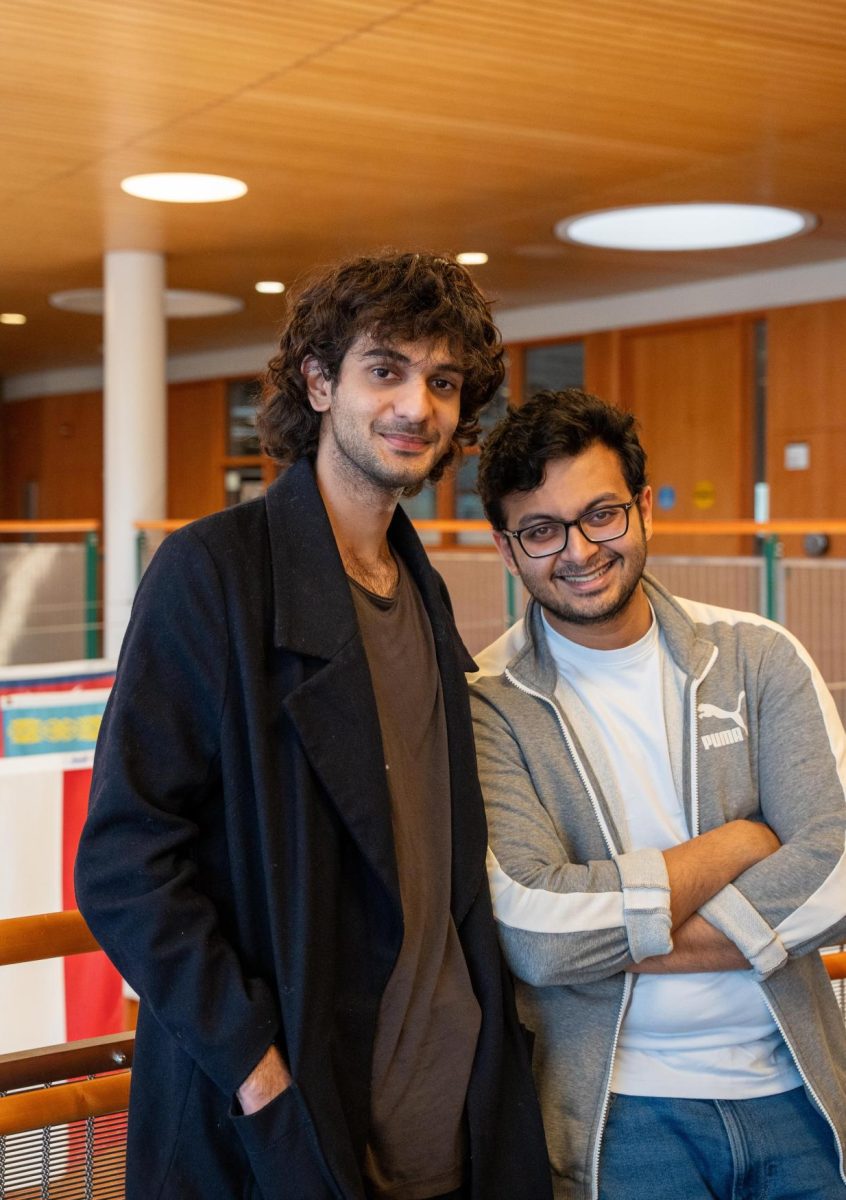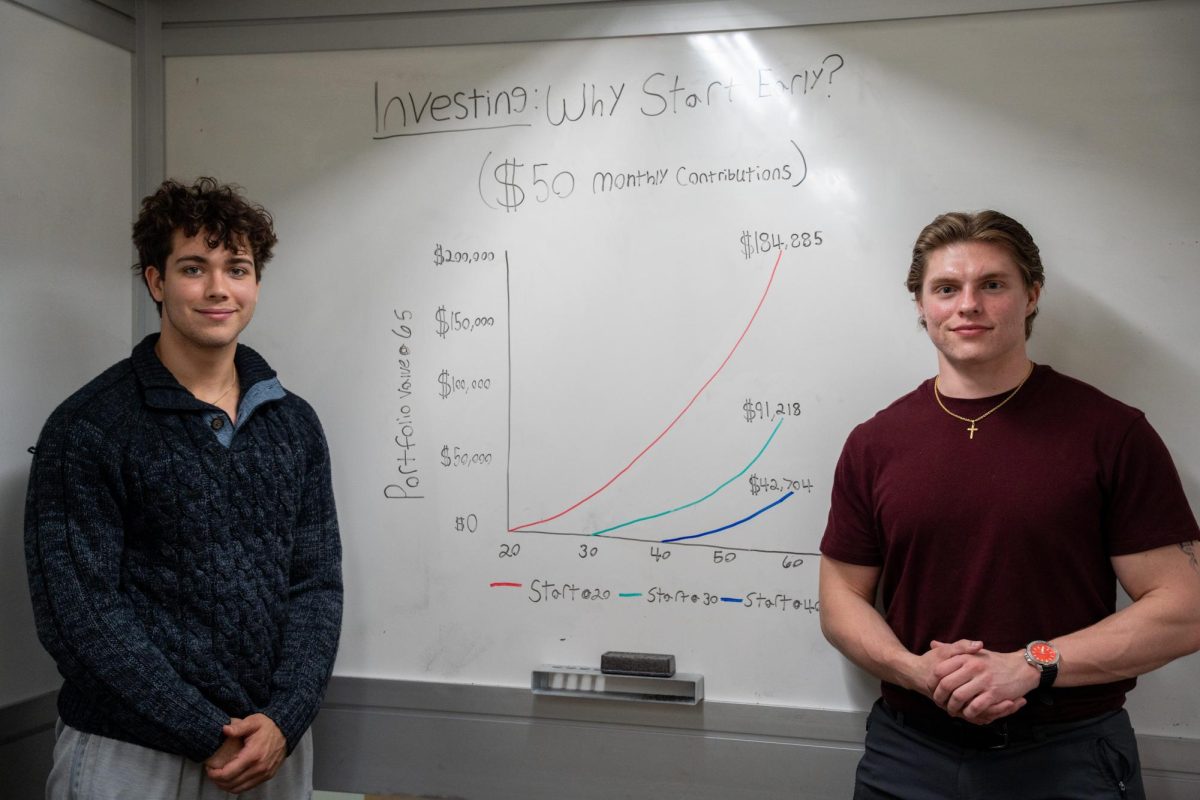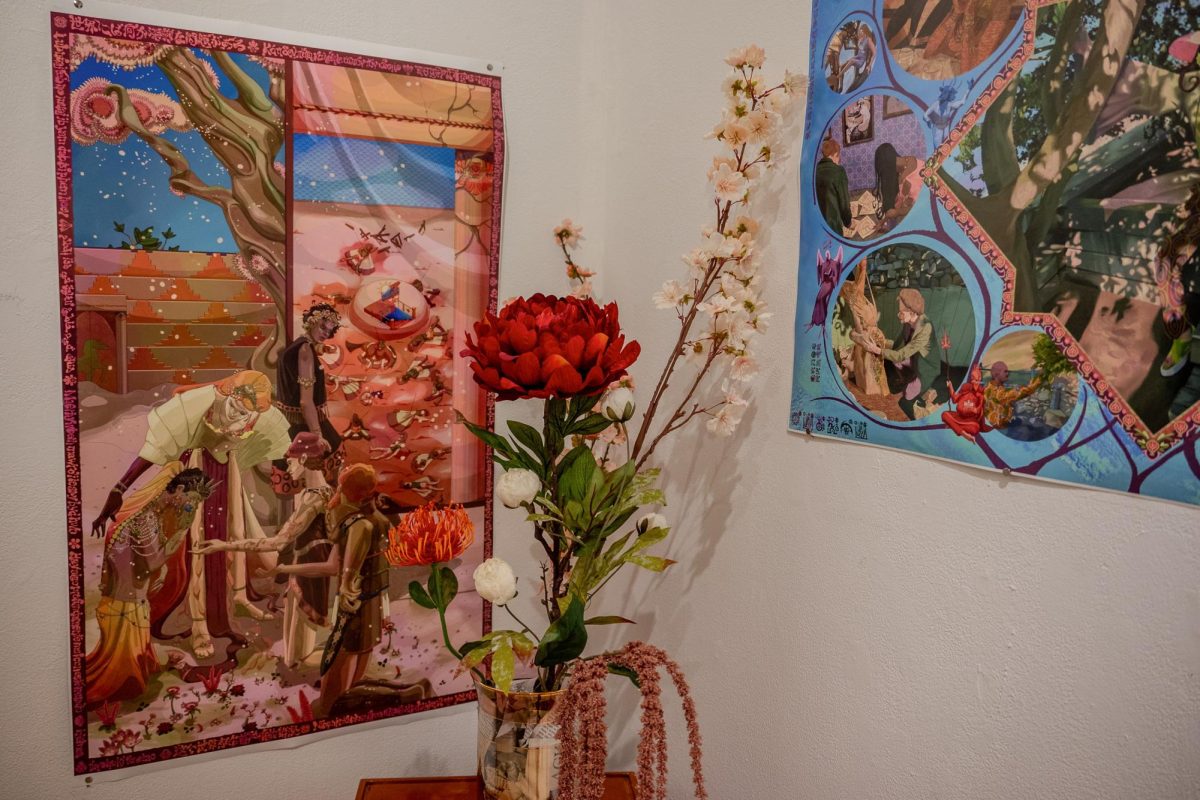Watched over by the smoky-faced drawings of Diane Victor—a South African artist who vistited Grinnell earlier this year and whose exhibit remains on display—students and professors absorbed a gallery talk this past Tuesday about the art of other South African artists.
On April 5, Dr. Elizabeth Perrill ’99 returned to Grinnell and the Faulconer Gallery to give an intelligent and engaging talk entitled “South African Rubber & Clay: Material Challenges to the Global Nomad.”
Perrill graduated from Grinnell with honors in Art History and a concentration in Gender & Women’s Studies to pursue a career combining her two interests. She worked for two years at the Faulconer Gallery upon graduating, and then earned an M.A. and a Ph.D. in African Art History before beginning a position at the University of North Carolina, Greensboro as an Assistant Professor.
In relation to Grinnell, Perrill assisted in generating interest in South African Art, which resulted in the installation of many South African exhibitions in the Faulconer Gallery, from work by the contemporary artist William Kentridge, to traditional collections of pottery created by women potters of the Zulu and Xhosa tribes, to the current exhibition of Diane Victor’s smoke and ash drawings, “Of Fables and Folly.”
Perrill spoke this week about the study of contemporary South African art, especially in the post-apartheid era which has opened up new positions for younger artists in their twenties and thirties.
As opposed to their predecessors, the young artists in South Africa are concerned with a new type of art that is highly invested in the material it works from and the idea of linking their art with their roots or local culture.
Tossing around catchphrases, such as “Global Nomad” and “material specificity” and a handful of foreign words from the languages of South African tribes, Perrill opened up the discussion of African art to issues of gender and place, such as with an examination of black hyper-masculinity.
Focusing particularly on two young male artists, Nicholas Hlobo and Clive Sithole, Perrill showed a slideshow of photographs of their work, explaining the ways in which Sithole modified clay surfaces to resemble traditional male crafts like woodcarving.
Hlobo, similarly, worked with reclaiming used rubber from South African sources and combining it with ribbon to create art.
Overall, her talk on South African art fit particularly well with the current exhibition on display.
When she opened up the room to questions, Perrill was able to address both artistic issues about which she had spoken and also issues about the pros and cons involved in entering the art history profession upon graduating from Grinnell.



















































